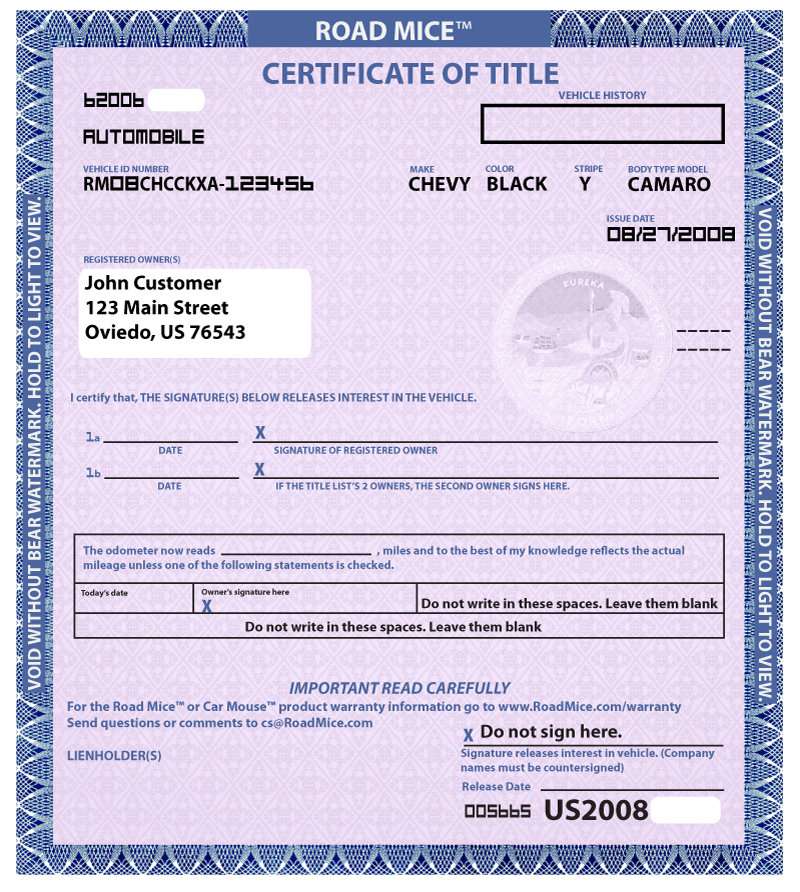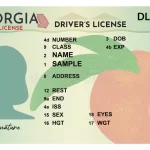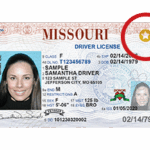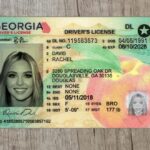Requesting a Car Title from the DMV: A Comprehensive Guide
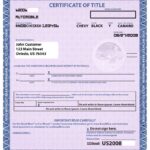
Losing your car title is a frustrating experience. Whether it’s misplaced, stolen, or damaged beyond recognition, the sinking feeling that accompanies its absence is undeniable. Your car title is more than just a piece of paper; it’s a crucial document proving your ownership of the vehicle, necessary for selling, transferring, or even insuring your car properly. Fortunately, obtaining a replacement isn’t as daunting as it might seem. This comprehensive guide will walk you through the process of requesting a car title from your local Department of Motor Vehicles (DMV), covering everything from understanding the importance of the title to navigating the specific requirements of your state.
Why is the Car Title So Important?
Before diving into the how-to, let’s understand why the car title is so vital. Think of your car title as the deed to your house. It’s the legal document that establishes you as the rightful owner of the vehicle. Here’s a breakdown of its key functions:
- Proof of Ownership: The primary purpose of the title is to irrefutably prove that you own the vehicle. It names you as the legal owner and provides a unique identifier for the car.
- Selling or Transferring Ownership: When you sell your car, you must transfer the title to the new owner. Without the title, you cannot legally transfer ownership, and the buyer will face significant hurdles in registering the vehicle in their name.
- Registration and Insurance: To register your car and obtain insurance coverage, you typically need to present the title to the relevant authorities. This assures them that you are indeed the rightful owner and have the legal right to register and insure the vehicle.
- Securing a Loan: If you plan to use your car as collateral for a loan, the lender will require the title as proof of ownership. They may even hold the title until the loan is fully repaid.
- Preventing Vehicle Theft and Fraud: The title helps prevent vehicle theft and fraud by providing a record of ownership and making it difficult for criminals to sell or register stolen cars.
Understanding the Types of Car Titles
It’s also important to understand the different types of car titles you might encounter:
- Clear Title: This is the most desirable type of title, indicating that the vehicle is free and clear of any liens or encumbrances. It means you own the car outright.
- Lien Title: This type of title indicates that there is a lien on the vehicle, typically from a lender who provided a loan to purchase the car. The lienholder’s name is listed on the title. Once the loan is paid off, the lienholder will release the lien, and you can apply for a clear title.
- Salvage Title: A salvage title is issued when a vehicle has been declared a total loss by an insurance company due to damage from an accident, flood, or other event. Before a salvage-titled vehicle can be legally driven on public roads, it typically needs to be repaired and inspected by the DMV.
- Rebuilt Title: After a salvage-titled vehicle has been repaired and passed inspection, it can be issued a rebuilt title. This indicates that the vehicle was once considered a total loss but has been restored to a roadworthy condition.
- Duplicate Title: This is the type of title you’ll request when your original title is lost, stolen, or damaged. It serves as a replacement for the original.
The Process of Requesting a Duplicate Car Title: A Step-by-Step Guide
Now, let’s break down the process of requesting a duplicate car title. Keep in mind that the specific requirements and procedures may vary depending on your state, so it’s always best to check with your local DMV for the most accurate information.
Step 1: Confirm Your Eligibility
Before starting the application process, ensure you are eligible to request a duplicate title. Generally, you are eligible if:
- You are the registered owner of the vehicle, as listed on the DMV’s records.
- The original title has been lost, stolen, or damaged.
- You can provide proof of identification and ownership.
If you are not the registered owner, you will need to transfer ownership of the vehicle before you can apply for a title in your name.
Step 2: Gather the Necessary Documents and Information
This is arguably the most crucial step. Having all the required documents readily available will streamline the application process and prevent delays. Common documents and information needed include:
- Application for Duplicate Title: This is a specific form provided by your state’s DMV. You can usually download it from their website or obtain it in person at a DMV office.
- Proof of Identification: Acceptable forms of identification typically include a valid driver’s license, state-issued identification card, passport, or other government-issued photo ID. Make sure the ID is current and hasn’t expired.
- Vehicle Information: You’ll need information about your vehicle, such as the Vehicle Identification Number (VIN), make, model, and year. You can find the VIN on the vehicle’s dashboard (visible through the windshield) or on the driver’s side doorjamb.
- Vehicle Registration: Your current vehicle registration card can help verify your ownership and provide necessary vehicle information.
- Lien Release (If Applicable): If there was a lien on the vehicle but it has been paid off, you’ll need to provide a lien release from the lender. This document confirms that the lien has been satisfied and you are now the sole owner of the vehicle.
- Notarized Statement (In Some Cases): Some states may require a notarized statement explaining why you need a duplicate title. This statement should clearly state that the original title was lost, stolen, or damaged and that you are the rightful owner of the vehicle.
- Payment for Fees: There is typically a fee associated with requesting a duplicate title. The fee amount varies by state and can usually be paid by cash, check, or credit card. Check your local DMV’s website or contact them directly to confirm the current fee.
Step 3: Complete the Application Form
Carefully and accurately complete the application form for a duplicate title. Pay close attention to detail and ensure all information matches your records. Double-check the VIN, your name, and your address to avoid errors that could delay the processing of your application. If you’re unsure about any section of the form, don’t hesitate to contact your local DMV for clarification.
Step 4: Submit Your Application and Supporting Documents
Once you’ve completed the application and gathered all the necessary documents, you’ll need to submit them to your local DMV. There are typically three ways to submit your application:
- In Person: This is the most common method. You can visit your local DMV office and submit your application and documents in person. Be prepared for potential wait times, especially during peak hours.
- By Mail: Some states allow you to mail your application and documents to a designated DMV address. Be sure to make copies of all documents before mailing them, as you will not receive the originals back.
- Online: In some states, you may be able to apply for a duplicate title online through the DMV’s website. This is often the most convenient option, but it may require you to scan and upload your documents.
Step 5: Pay the Required Fees
You will need to pay the required fee when you submit your application. The acceptable methods of payment vary by state and may include cash, check, money order, credit card, or debit card. Make sure you know the accepted forms of payment before you go to the DMV.
Step 6: Wait for Processing
After you submit your application and pay the fees, the DMV will process your request. The processing time can vary depending on the state and the volume of applications they are processing. It can range from a few days to several weeks. You can usually check the status of your application online or by contacting the DMV directly.
Once your application is approved, the DMV will issue a duplicate title. The title will typically be mailed to your address on file. Once you receive the title, carefully review it to ensure all the information is accurate. Keep the title in a safe and secure location.
State-Specific Considerations
While the general process for requesting a duplicate car title is similar across states, there are some state-specific considerations you should be aware of:
- Application Forms: Each state has its own specific application form for requesting a duplicate title. You can usually find the form on the DMV’s website or obtain it in person at a DMV office.
- Required Documents: The required documents may vary slightly from state to state. Some states may require additional documentation, such as a notarized statement or proof of residency.
- Fees: The fee for requesting a duplicate title varies by state. Check your local DMV’s website or contact them directly to confirm the current fee.
- Processing Times: The processing time for duplicate title applications can vary depending on the state and the volume of applications they are processing.
- Online Applications: Some states allow you to apply for a duplicate title online, while others require you to submit your application in person or by mail.
- Notary Requirements: Some states require certain documents, such as a notarized statement, to be notarized before submitting them to the DMV.
Common Mistakes to Avoid
To ensure a smooth and efficient application process, avoid these common mistakes:
- Incomplete or Inaccurate Application: Make sure you complete the application form fully and accurately. Double-check all information, especially the VIN, your name, and your address.
- Missing Documents: Gather all the required documents before submitting your application. Missing documents can cause delays in processing your request.
- Expired Identification: Ensure your proof of identification is valid and hasn’t expired.
- Incorrect Fees: Pay the correct fee amount. Check your local DMV’s website or contact them directly to confirm the current fee.
- Submitting to the Wrong DMV: Make sure you submit your application to the correct DMV office. Some states have regional DMV offices, and you may need to submit your application to a specific office based on your location.
- Ignoring State-Specific Requirements: Be aware of any state-specific requirements for requesting a duplicate title. Check your local DMV’s website or contact them directly for more information.
What to Do If You Can’t Find the Vehicle Identification Number (VIN)
The VIN is a crucial piece of information for your title application. If you’re having trouble locating it, try these places:
- Dashboard: The most common location is on the driver’s side dashboard, visible through the windshield.
- Driver’s Side Doorjamb: Look on the sticker located on the driver’s side doorjamb.
- Engine Block: The VIN may be stamped on the engine block.
- Vehicle Registration: Your vehicle registration card should also list the VIN.
- Insurance Card: Your insurance card may also contain the VIN.
If you still can’t find the VIN, contact your local DMV. They may be able to help you locate it or provide alternative options for verifying your vehicle’s identity.
What If There’s a Lien on the Vehicle?
If there’s a lien on the vehicle, you’ll need to obtain a lien release from the lender before you can apply for a duplicate title. The lien release is a document that confirms the loan has been paid off and the lender no longer has a claim on the vehicle. Once you have the lien release, you can submit it with your application for a duplicate title.
Alternatives to Obtaining a Duplicate Title
While requesting a duplicate title is the standard procedure, there might be alternative solutions in specific circumstances:
- Power of Attorney: If you are unable to apply for a duplicate title yourself, you may be able to grant someone power of attorney to act on your behalf.
- Court Order: In certain situations, such as when the original owner is deceased or incapacitated, you may need to obtain a court order to transfer ownership of the vehicle.
- Surety Bond: Some states allow you to obtain a surety bond instead of a title. This bond acts as a guarantee that you are the rightful owner of the vehicle and protects against any future claims.
Preventing Future Title Loss
Once you have your duplicate title, take steps to prevent losing it again. Here are some tips:
- Store it in a Safe Place: Keep your title in a secure location, such as a safety deposit box or a fireproof safe.
- Make a Copy: Make a photocopy of your title and store it in a separate location.
- Consider Electronic Storage: Scan your title and store it electronically in a secure cloud storage service.
- Don’t Keep it in Your Car: Avoid keeping the original title in your car, as it could be stolen if your vehicle is broken into.
Conclusion
Requesting a car title from the DMV can seem like a daunting task, but by following this comprehensive guide, you can navigate the process with confidence. Remember to gather all the necessary documents, complete the application accurately, and be aware of your state’s specific requirements. While patience is key, with the right preparation, you’ll be back on the road with your proof of ownership in hand. Don’t hesitate to contact your local DMV if you have any questions or need assistance. They are there to help!
